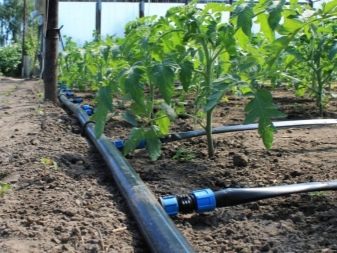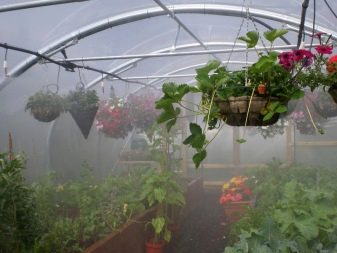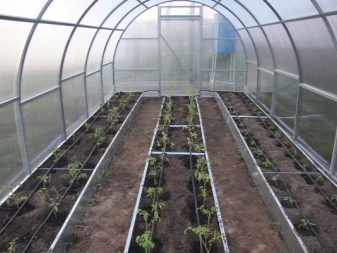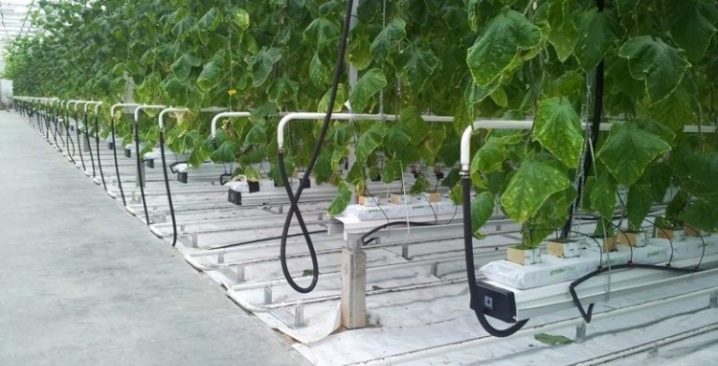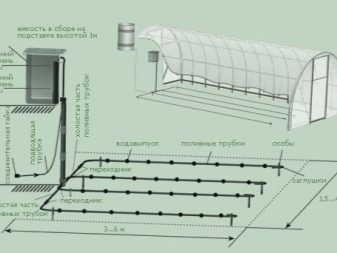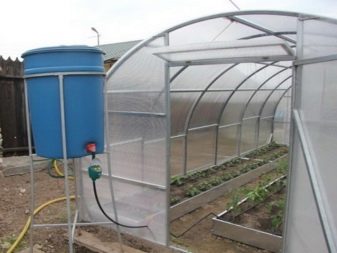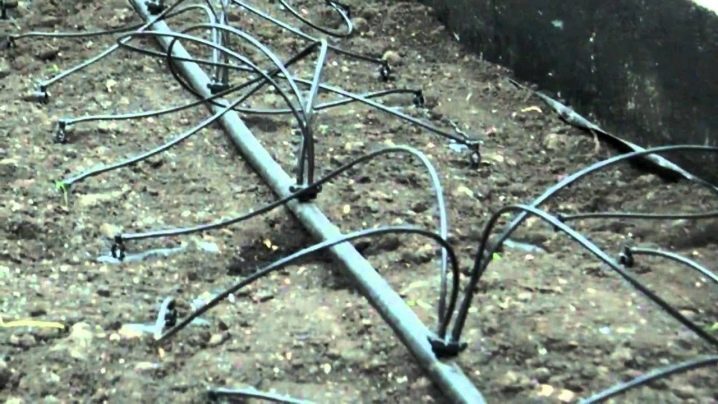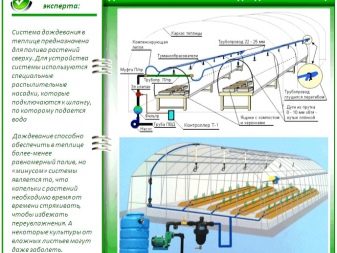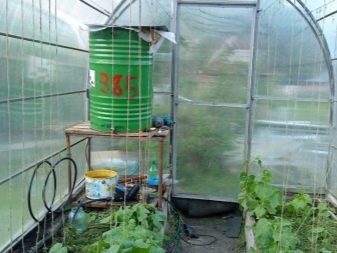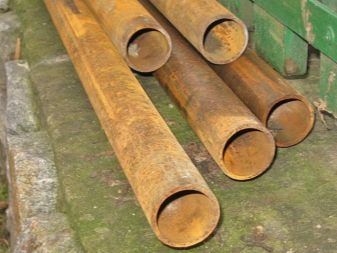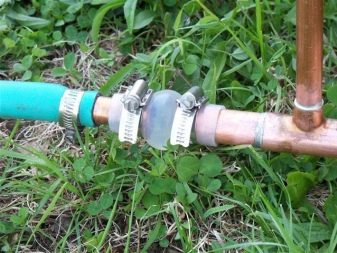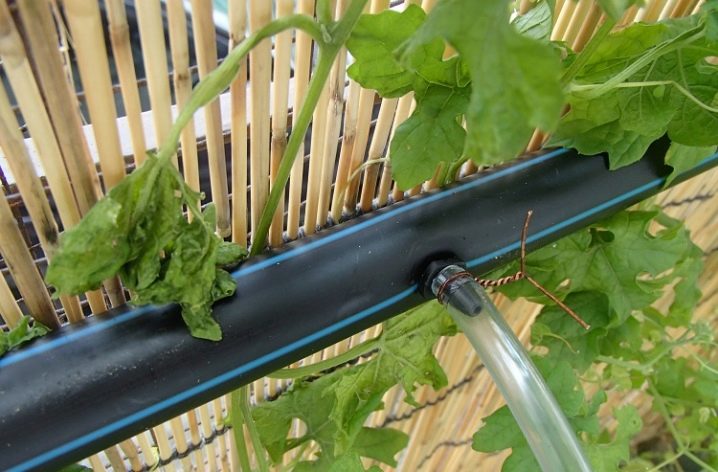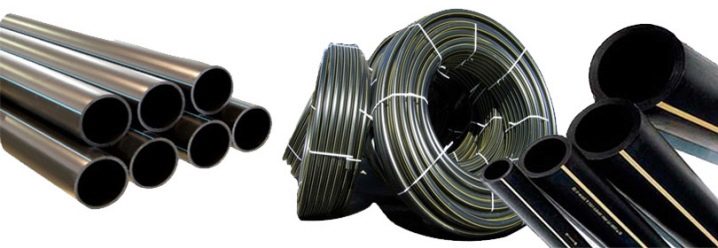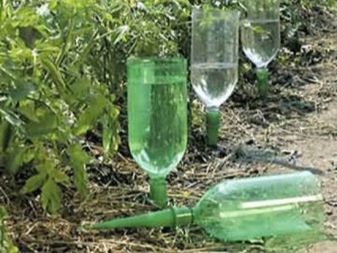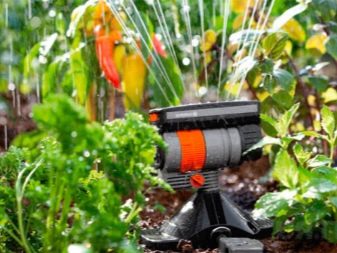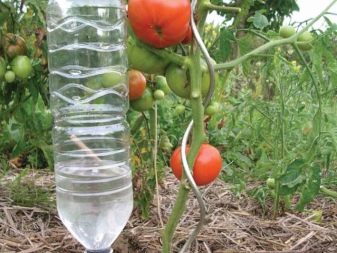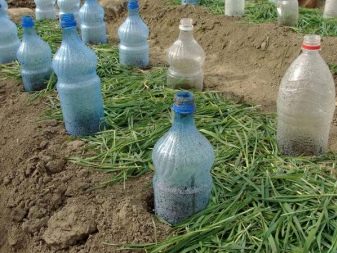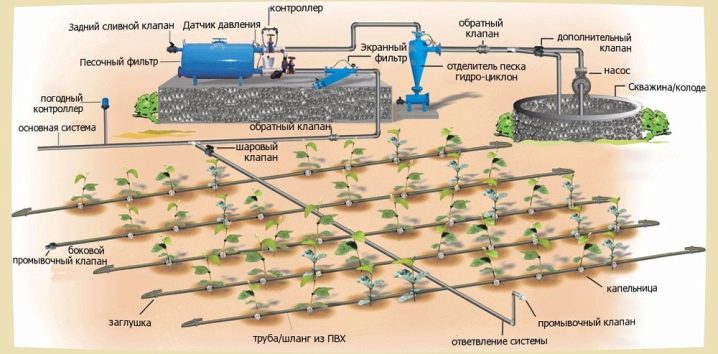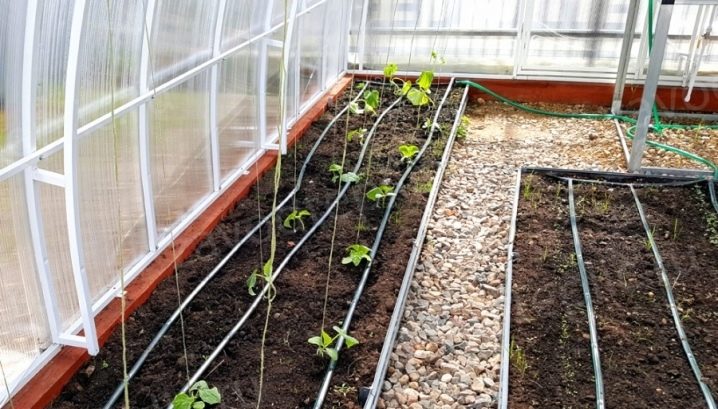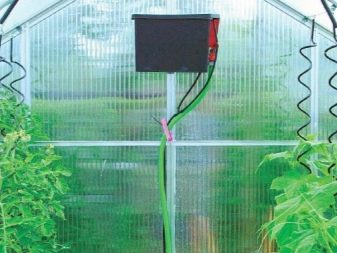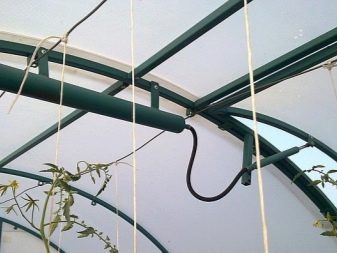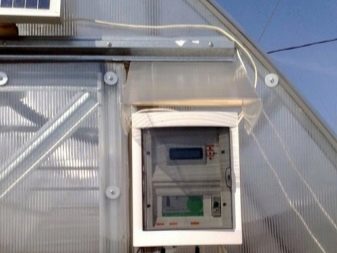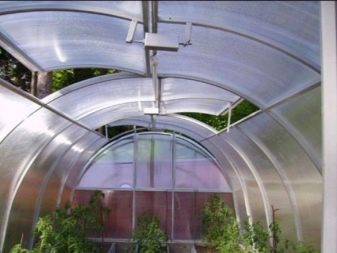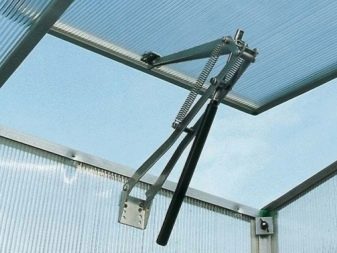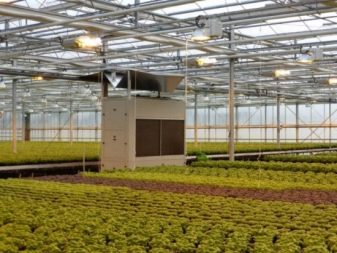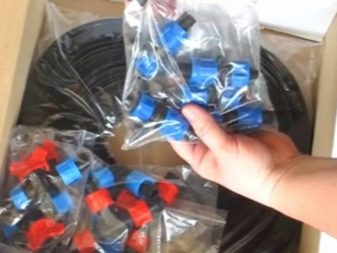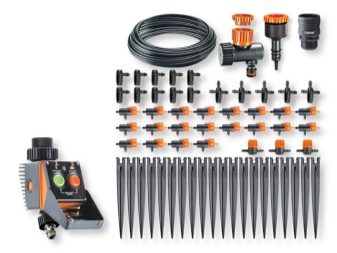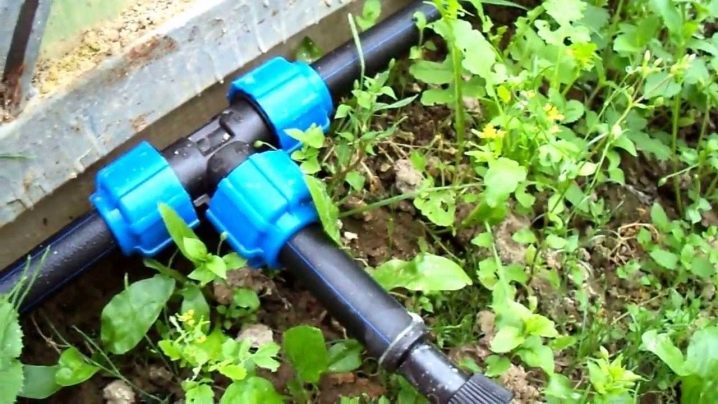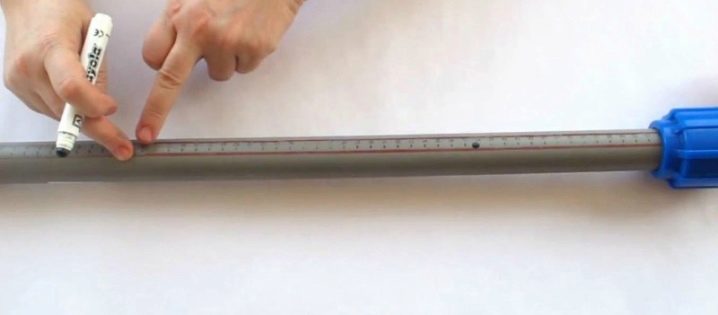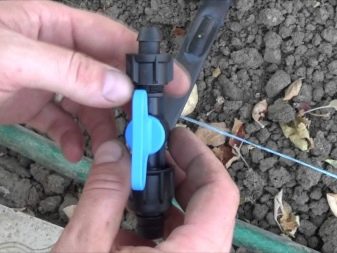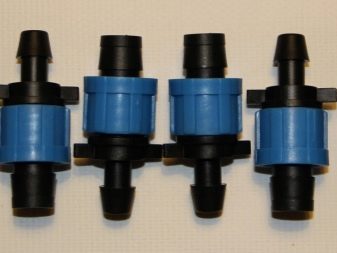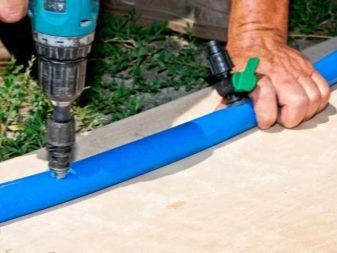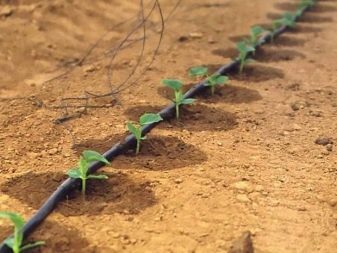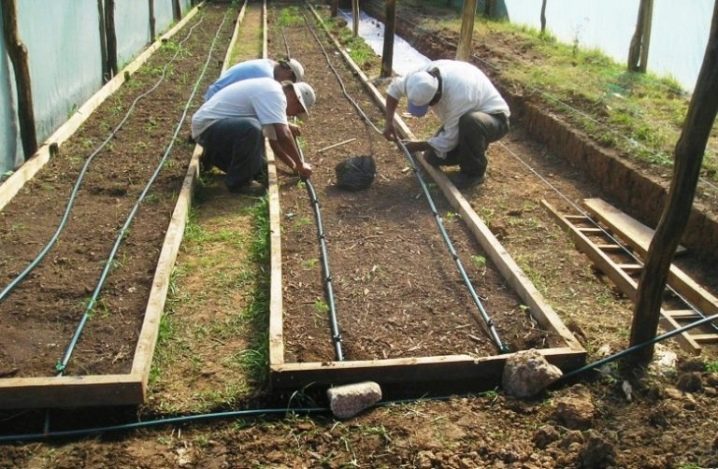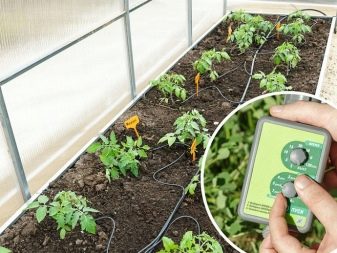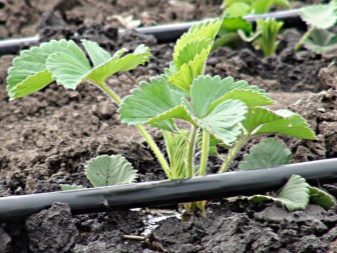Subtleties of the device of autowatering in the greenhouse
Cultivation of vegetable crops in your garden — what could be better, fresh tomatoes and cucumbers from the garden are quite different in taste compared to the store ones. As a rule, all this is grown in greenhouses. And behind all this magnificence need care, and most importantly - watering. How to implement automatic watering in the greenhouse, will be discussed in the article.
Special features
Caring for a garden takes too much energy, sometimes people simply do not have the opportunity to visit their garden site with the necessary frequency for regular maintenance. Therefore, it is increasingly possible to see in the greenhouses a variety of automatic watering systems. Having once invested in such a system, it will be possible to enjoy its uninterrupted work for several years.
Criterias of choice
Having planned the system of autowatering on your site,you need to choose the optimal design directly for your case, and then its use will be useful and pleasant for you.
Here are some selection criteria that need to be determined at the planning stage of the system:
- evaluate your financial capabilities - you can make an automatic system with your own hands, having spent very little effort and money on it, or you can simply buy a ready-made one;
- decide where exactly the watering will be done, and for the cultivation of which plants you will use it;
- The correct calculation of pumping power is not an easy task, which depends on a huge number of factors, such as the type of landscape, distance from a water source, the number of watering plants;
- you need to schedule a water filter at the entrance to the system, this will ensure long-term uninterrupted operation of automatic watering for several years.
Kinds
Now about the main thing: the range of irrigation systems today is very abundant, try to understand their basic types.
Drip irrigation system
Another name for this system is point watering. Most often you can find this type of automatic watering on the scale of small garden plots. The main advantage of this type of system is low cost.Water with a small pressure is supplied through the hoses from an autonomous structure (a tank that fills, for example, from a well) and goes directly to the roots of plants through droppers.
Another advantage of this irrigation system is that due to the slow and uniform wetting of the soil, the ground at the roots is always kept wet and never dries out. One more of the advantages: the whole plant gets the water, but not the weeds, which is usually inevitable when watering from the watering can.
There are two options for how to provide a drip system: Either you make holes on your own and fit droppers, or it is simpler, you can purchase a special hose, inside it is a special capillary labyrinth that slows down the flow of water and leaves it in droplets. This device is called drip tape.
One of the varieties of drip irrigation is micro-irrigation. It is distinguished by low water consumption (achieved through microscopic droplets) and is most often used in mini-greenhouses on city balconies, for flowers in pots or in winter gardens.
Rain automatic watering
This method of irrigation simulates the natural conditions of the environment when the plants are watered with raindrops. In this case, the absorption of moisture is not only the roots of the crops planted by you, but also the surface of the leaves. An additional advantage of this system is that high humidity is formed in the greenhouse, which is especially important for cucumbers, for example. But weeds love this microclimate.
Subsurface watering
The structure of the irrigation of this type is similar to drip irrigation with only one difference - the supply hoses are located under a layer of soil. Underground irrigation has an important advantage - the earth does not get wet on the surface, and therefore does not form a solid crust, which must be regularly loosened. On the other hand, this type of watering system also has a drawback; water inlets often get clogged.
Materials
Now consider the main types of materials that can be used in the design of an automatic irrigation system.
- Metal pipes. Durable and durable material, but with a lot of flaws. For example, the susceptibility to corrosion, the labor-intensive process of installing such pipes,practically inaccessible to the average man, and, accordingly, requires the involvement of a specialist, which further increases the cost of such a project. Additional accessories for metal pipes, such as fittings and taps, are quite expensive.
- PVC pipes. Otherwise - PVC pipes. Are the toughest of all products based on polymeric materials. The ability to withstand temperature changes, unprecedented resistance to external influences, increased strength - the main advantages of this material. Used for ground irrigation systems, and for intra-ground. It is very easy to connect PVC pipes to each other; this process does not require any special skills, it is performed with the help of specialized adhesives and fittings.
- Polyethylene pipes. This material is characterized by elasticity, which is especially important in the period of cold weather, when there is a probability of water freezing in the pipes, because if such an incident occurs, the pipes can simply burst. Polyethylene pipes are protected from this trouble. Mounting requires special joint welding skills that are easy to master.
- Polypropylene pipes. Very similar in properties to polyethylene, but are a more economical option. They withstand high pressure, are not subject to corrosion, light, resistant to chemicals, do not break. Coupled by welding, as well as polyethylene pipes.
All the above materials, of course, relate to the professional installation of durable systems of automatic watering, which, although you can mount your own hands, but still quite difficult to do it without special knowledge. In practice, drip irrigation is often implemented in greenhouses using simple plastic bottles. Bottle watering is the most economical option, but also the most short-lived.
According to the classification, bottle self-watering refers to drip irrigation.
Basic mounting options:
- bottles are suspended;
- installed in close proximity to the root system;
- dig into a shallow depth.
The simplest bottle system can be done by hand.
The best option for the capacity for bottle irrigation is the volume of a bottle of 2 liters. In the lid, several holes are made in the size of about 2 mm (conveniently with the help of a hot nail).Next, cut off the bottom of the bottle, it is better to do this not to the end, so that the bottom can be used as a cover to prevent evaporation of moisture and debris. The bottle is installed in the hole with a depth of not more than 15 cm at an angle of 45 degrees. The frequency of the location of the bottles - every 15 cm of soil. Installation should be done as carefully as possible so as not to damage the root system of the plant.
Device layout
As for greenhouses, there are three main points that require automation:
- autowatering;
- automation of ventilation (opening of doors and windows);
- automatic moisture control.
Automatic watering
Before starting installation of system of autowatering, it is worth preparing well. It is necessary to begin work with drawing the plan of a site with the exact sizes and an arrangement of plants, it is obligatory to specify all distances between them. Next, you need to mark the approximate location of the future water supply system, you need to count and mark all branch points and pipe joints to simplify the task of purchasing additional funds.
After drawing all the planned pipes you should think about the source of water supply. - it can be a centralized water supply system or, if it is not possible to connect it, an ordinary barrel. It should be borne in mind that the barrel should be at a height of about 2 m (assuming that you are not going to purchase a pump), and in order to avoid water blooming, it must be completely covered from the sun's rays.
We also think over the location of hoses and pipes - inside the soil, just on the surface of the earth or suspended. For in-soil irrigation, it is necessary to take into account the pressure of the soil on the pipeline, so you need to choose products with thicker walls. When the ground layout should not forget again about the blooming of water, the pipes should not be transparent in this case.
A filter is required for the drip system., as the hoses in the course of use will be constantly clogged. It is desirable to automate the drip irrigation system, for this purpose special controllers are used. Using the controller, it is possible to improve the machine by sensors of humidity, rain, temperature. More simple automation options are mechanical or electronic watering timers.
Automatic airing
Proper automating of the greenhouse can achieve truly amazing results in the cultivation of vegetable crops, because every gardener knows that heat affects plants very destructive, especially in the greenhouse, where overheating is most likely under the scorching rays of the sun.
Automatic airing is of 2 types:
- volatile system, provided with electric power;
- autonomous system, works without external electricity.
Each species has its advantages and disadvantages. Thus, the systems connected to the power source are more powerful, the data from the temperature sensor give a clear command to the device when to activate the mechanism. In this case, a power outage means death for the plants.
Autonomous systems are hydraulic, bimetallic and pneumatic. Bimetallic most low-powered ones should be installed only on light vents. The hydraulic drive is quite common and has a good capacity, it is also possible to make the hydraulic system independently at home.
Moisture control
Plants due to an overabundance or lack of moisture in the greenhouse can start to hurt with various ailments, for example, fungal diseases are very fond of conditions of high humidity. On sale you can find devices to control this process, at the right time they will feed moisture into the soil, achieving an optimal value of 60-70%. The organization of the required level of humidity can increase the yield several times.
Installation
You can organize automatic watering in the greenhouse with your own hands. Homemade drip irrigation - a profitable investment for villas and gardens, where there is no opportunity to come every day. It is easiest to organize self-watering in the greenhouse of the drip type, therefore we will consider its installation principle.
If your system will not take water in the barrel, but, for example, in a pond or well, you must install a pumping station.
Next in series in the system is a filter for water. Some skip this stage, but still in cases of water intake from external sources, grains of sand or other particles will get into the system, which can disable the entire system by simply clogging it up with debris.
As for the water pressure in the system,when using different sources of water supply, the pressure will be different in each individual case, therefore, in order to level somewhere insufficient, and somewhere excessive pressure, special regulators or gearboxes are used. To find out the required pressure of your system, you should pay attention directly to the drip hose or tape, for each of which implies its own working pressure. Drip strain can withstand pressure up to 4 bar, drip tape with a wall thickness of 8 mm can withstand 0.8 - 1 bar. Gearboxes are of various types, but the most convenient for autowatering systems is flow-through.
Next, a water supply solenoid valve connected to the controller is placed in the system. Its task is simple - when programming the controller, it at a certain point in time sends a signal to the valve, and it, in turn, opens or closes. In this node is all the automation of the process of automatic watering. Some solenoid valves also feature manual opening. This is an important and very convenient feature.
Choose a normal garden hose, its diameter should be optimally from 3 to 8 mm (exactly the diameter of the lumen is taken into account), it will connect our water supply source:water supply system or even just a bucket - with a main pipeline, which will directly supply water to the drip hoses, tapes, or external droppers will be attached to it. The main pipeline is essentially a simple polyethylene pipe. The connection between the hose and the pipeline is carried out through special fittings that are easy to get at any store.
The main pipeline is connected to the drip tapes by the so-called start-connectors. A hole of such a size is drilled in the pipeline that the rubber seals that are included would be tight. Next, a start-connector is inserted into this hole and secured by twisting the nut. When buying start connectors, you should pay attention to the presence of a crane, since not all manufacturers complete this equipment with a crane. Thus, it will be possible to regulate the partial watering of the system, disabling one or another bed. The drop tape is already connected to the start connectors, it is also simply tightened with a nut.
If you are using not drip tape, but simple hoses, during installation, a screw is screwed into the hose (not through!) Opposite each plant to adjust the flow rate, you can unscrew it by 1-2 turns.
At the very end of the installation do not forget to plug the end of the drip tape or hose.
Arrangement of drip auto watering is over. As you can see, it’s not so difficult to arrange a comfortable life in a greenhouse.
Tips and tricks
In this section there will be some recommendations on how to better organize the system of autowatering.
Watering Tips:
- do not allow both drying out and excess moisture;
- watering is better in the morning or evening;
- to understand that the soil is wetted enough - you can check how many centimeters it is wet (optimally 30-50 cm);
- it is better to give preference to watering with warm water heated by the sun;
- do not forget to loosen the soil;
- during periods of drought, rare and abundant watering is better than frequent and small volumes.
Regarding the process of operation:
- do not forget to clean the filters;
- before preservation for the winter, be sure to completely remove water from the entire system;
- sensors and batteries for the winter is better to bring in a warm room;
- solenoid valve for the winter is also better to clean;
- make sure that there are no blockages in the system.
How is the installation of drip irrigation, see the following video.

